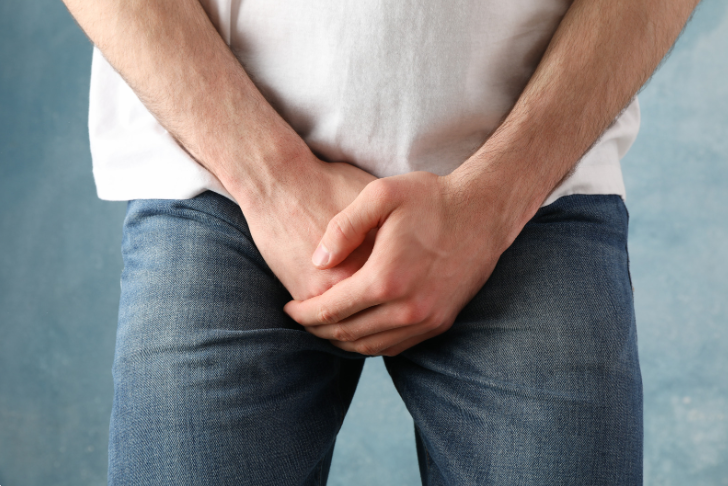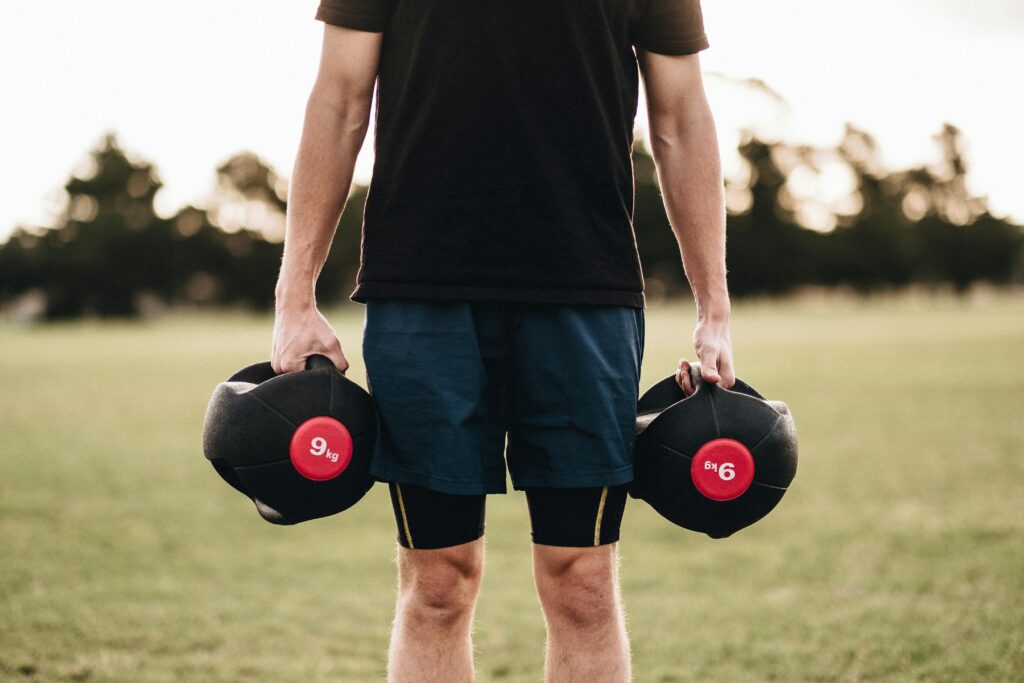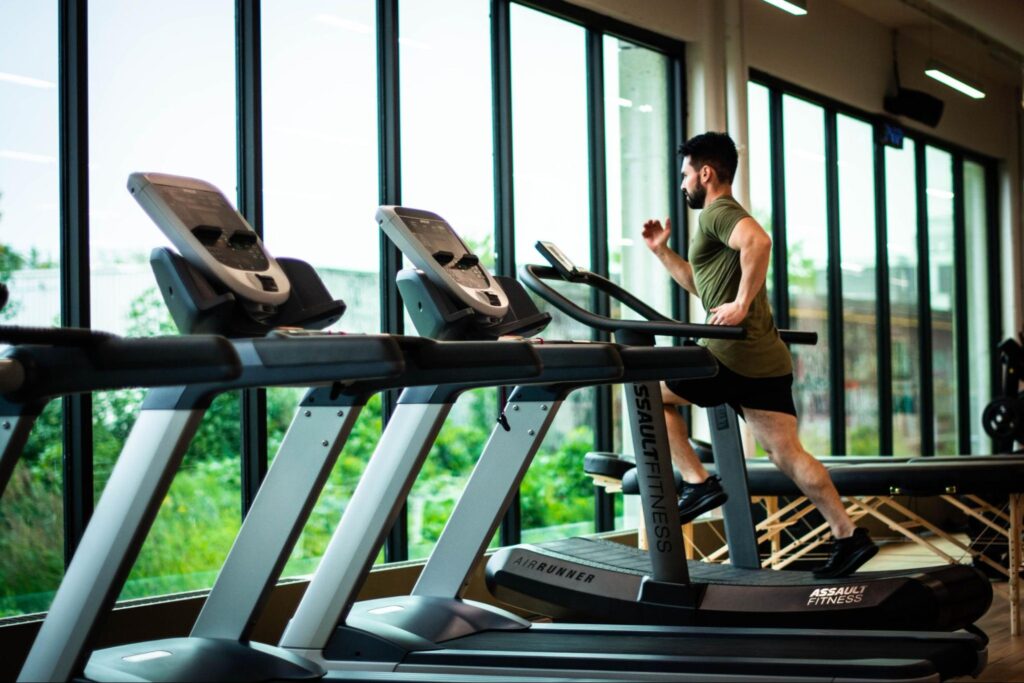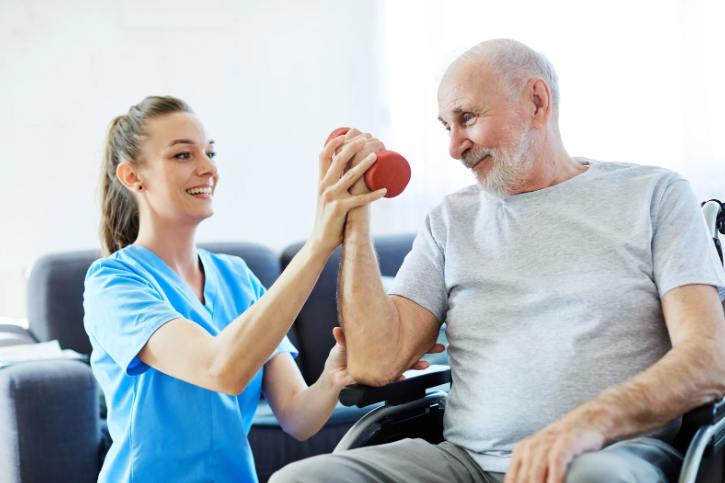Including particular exercises in your daily routine, such as Kegels, cardiovascular activities, and yoga, can help relieve enlarged prostate symptoms, reduce the course of BPH, and improve overall prostate health.
Prostate health is a rising issue for men, especially as they age. An enlarged prostate, commonly known as benign prostatic hyperplasia (BPH), is one of the most frequent disorders in males over the age of 50. While medical treatments are available, many men prefer natural methods to control symptoms and perhaps shrink the prostate.
What is Enlarged Prostate or BPH?
The prostate is a walnut-sized gland that sits directly below the bladder and in front of the rectum. It surrounds the urethra, which is the tube that transports urine from the bladder out of the body. The prostate gland is essential to the male reproductive system because it produces seminal fluid, which nourishes and transports sperm.
As men age, the prostate gland frequently grows in size, resulting in a disease known as benign prostatic hyperplasia (BPH). This growth is natural with age and is not malignant. However, when the prostate grows, it may compress or partially obstruct the urethra, leading to a variety of lower urinary tract symptoms.
According to the (NIDDK), BPH affects around half of men aged 51-60 and up to 90% of those over the age of 80. The actual origin of BPH is unknown; however, it is thought to be connected to aging-related hormonal changes, namely the balance of testosterone and dihydrotestosterone (DHT).
BPH can also impact other aspects of health, including fecal incontinence, highlighting the interconnected nature of pelvic health issues.
Symptoms of Enlarged Prostate

- Symptoms of an enlarged prostate may differ but often include:
- Frequent urinating, particularly at night (nocturia)
- Difficulty beginning to urinate
- Weak or intermittent urinary stream
- Inability to fully empty the bladder
- Frequent urination
- Painful urination or ejaculation
8 Best Exercises for Prostate Enlargement
Kegel Exercises
Kegel exercise, often called pelvic floor exercises, work the pelvic muscles that support the bladder and colon. Strengthening these right muscles can help men with BPH achieve better bladder control and may also aid in reducing erectile dysfunction and leaking urine.
How to do Kegel exercise for men:
- Identify your pelvic muscles by attempting to halt urinating in midstream.
- Once identified, contract and hold these muscles for five seconds before relaxing for five.
- Repeat 10-15 times, three times each day.
In 2021, research found that men who regularly performed Kegel exercises for 12 weeks had a 30% improvement in urinary symptoms linked with BPH, contributing to a healthy prostate and improved bladder control.
Aerobic Exercises

Aerobic exercise workouts such as walking regularly, running, swimming, and cycling can help manage BPH symptoms and other prostate related conditions. These workouts promote cardiovascular health, decrease inflammation, and control weight. The health benefits of these activities extend to improving erectile function and overall well-being.
A 2020 research discovered that men who engaged in moderate intensity physical activity for at least 150 minutes per week had a 25% lower chance of getting severe BPH symptoms than sedentary men.
Yoga
Yoga combines physical postures, breathing exercises, and meditation to help you relax and reduce stress. Specific yoga postures, such as Cobbler’s Pose, Bow Pose, and Hero Pose, are especially useful for prostate health because they stimulate the pelvic area, boosting circulation and decreasing prostate inflammation.
A 2021 research published found that men who practiced yoga three times a week for six months saw substantial decreases in prostate size and symptom severity. The health benefits of yoga include not only improved prostate health but also enhanced erectile function.
Here’s how to practice the prescribed yoga poses:
Cobbler’s pose (Baddha konasana)
Cobbler’s Pose is great for expanding the hips and groin, reducing pelvic tension and increasing blood flow to the prostate.
How to perform:
- Sit on the floor, with your legs straight in front of you.
- Bend your knees and bring the soles of your feet together, leaving your knees open to the sides.
- Hold your feet with your hands and gradually move them towards your crotch.
- Sit up straight, stretching your spine and focusing on softly pushing your knees to the floor.
- Hold the stance for 30 seconds to 1 minute, taking deep breaths throughout. Gradually increase the hold time as you get more comfortable.
This position stretches the inner thighs, groin, and knees, increasing pelvic flexibility and circulation, which can improve prostate health and help with BPH exercises.
Bow pose (Dhanurasana)
Bow Pose strengthens the back muscles and stimulates the abdominal organs, including the prostate, which can help relieve symptoms of an enlarged prostate.
How to perform:
- Lie face down on your stomach, legs extended straight behind you, arms at your sides.
- Bend your knees and put your heels to your buttocks.
- Reach back with your hands, grabbing your ankles.
- Inhale deeply, then as you exhale, lift your chest off the ground and bring your legs up and back to make a bow shape with your body.
- Hold the stance for 15 to 30 seconds, inhaling deeply. Exhale and lower your body back down.
Bow Pose stimulates the prostate gland, sBow Pose stimulates the prostate gland, stretches the entire front of the body, and enhances posture, contributing to better sleep and BPH management.
Hero pose (Virasana)
Hero Pose stretches the thighs, knees, and ankles while boosting circulation in the pelvic region, which is good for prostate health and supports prostate contraction.
How to perform:
- Kneel on the floor, knees together, feet slightly wider than hip-width apart, tops flat on the ground.
- Lower your buttocks between your heels while sitting on the floor or on a block for increased comfort.
- Place your hands on your thighs, palms down, and sit tall to stretch your spine.
- Close your eyes and concentrate on your breathing, keeping the posture for 1–5 minutes, depending on your comfort level.
This position increases flexibility in the hips and thighs, promotes relaxation, and improves blood flow to the pelvis.
Resistance Training

Resistance training consists of workouts that employ weights, resistance bands, or body weight to build muscles. Squats, lunges, and leg presses are excellent exercises for targeting the lower body and increasing pelvic muscle strength.
To strengthen the pelvic area, try doing squats with your knees bent and focus on proper form.
How to Do It: Incorporate resistance training exercises into your regimen two to three times per week, concentrating on complex actions that involve numerous muscle groups.
According to a 2018 research, men who engaged in regular resistance training had a substantial reduction in BPH symptoms, such as decreased urine frequency and nocturia. Resistance exercise also aids in maintaining a healthy weight, which is essential for prostate health.
Swimming
Swimming is a full-body workout that boosts cardiovascular health without placing too much strain on your joints. It’s a great workout for senior males or anyone with mobility limitations. Swimming can also complement physical therapy routines for individuals recovering from injury or managing chronic conditions.
Swim for 30-45 minutes, three to four times a week, using a variety of strokes to work different muscle groups.
According to a 2020 research, swimming can help decrease inflammation and improve urine function in men with BPH. Water’s buoyancy also lessens joint impact, making it a safe and beneficial workout for prostate health.
Pilates
Pilates is a low-impact workout that aims to strengthen the core, improve flexibility, and increase body awareness. Pilates movements like pelvic tilts and bridges are very effective for strengthening the pelvic floor muscles.
Perform a 30 to 60-minute Pilates session two to three times weekly, concentrating on core and pelvic movements.
Research published in 2021 found that men who regularly performed Pilates had much better urine control and fewer BPH symptoms. Pilates also improves general flexibility and core strength, which promotes good posture and pelvic alignment, supporting physical therapy goals and potentially alleviating trigger point pain by enhancing muscle function and reducing tension.
Tai Chi
Tai Chi is a martial art that emphasizes calm, controlled motions and deep breathing. It is very useful for lowering tension and enhancing balance and flexibility.
Tai Chi should be practiced for 20-30 minutes daily or several times a week, emphasising smooth, flowing motions and deep breathing methods.
According to a 2019 research, men with BPH who practiced Tai Chi saw a substantial reduction in symptom severity, including increased urine flow and decreased nocturia. Tai Chi’s emphasis on relaxation and mindfulness also helps reduce stress, which is good for prostate health.
Stretching and Flexibility Exercises
Stretching exercises increase flexibility, alleviate muscular tension, and promote circulation, especially in the pelvic area. Concentrate on stretches that work the hips, groin, and lower back.
How to Do It: Work stretching exercises into your daily regimen, spending 10-15 minutes on stretches that target the lower body and pelvic area.
According to a 2020 research published in The Journal of Human Kinetics, men who performed regular stretching exercises reported decreased pain and better urine function. Stretching also reduces muscular tension and improves mobility, which can assist with some of the symptoms of BPH.
Prostate Exercises To Avoid
While exercise is good, some activities could worsen the prostate or cause discomfort. Men with BPH should approach the following workouts with caution:
Cycling: While cycling is a good type of cardiovascular exercise, the pressure imposed on the prostate area by the bicycle seat can cause pain or worsen symptoms in some men with BPH. In a 2021 research published in Urology, males who cycled regularly had more urinary problems than those who did other types of exercise. Men can utilize a specially constructed seat with a cut-out part to relieve pressure on the prostate.
Heavy Weightlifting: Lifting extremely high weights might raise abdominal pressure, potentially causing strain and worsening BPH symptoms. A 2020 research discovered that males who engaged in heavy weightlifting without adequate technique were more likely to develop deteriorating BPH symptoms. To lessen the danger, focus on perfect technique and use lesser weights with more repetitions.
High-Impact Sports: Activities such as running, jumping, and other high-impact sports can exert strain on the pelvic region, thereby worsening prostate symptoms. In a 2021 study discovered that men with BPH who participated in high-impact sports were more likely to experience urinary pain than those who engaged in low-impact activities.
Benefits of Exercise for Enlarged Prostate

Improved Urinary Function: Pelvic floor exercises, such as Kegels, strengthen pelvic muscles, enhancing urinary control. A 2020 study found a 30% improvement in urinary symptoms for men doing daily pelvic floor exercises.
Weight Management: Regular exercise helps manage weight, crucial since obesity is a risk factor for BPH. A 2021 study highlighted that higher BMI increases BPH risk, underscoring the importance of weight control through exercise.
Enhanced Hormonal Balance: Exercise regulates hormones like testosterone and insulin, vital for prostate health. Frequent exercisers show better hormonal profiles, linked to a reduced risk of BPH.
Stress Reduction: Techniques like yoga and Tai Chi lower stress, which can worsen BPH symptoms. Men who engaged in stress-reduction activities experienced a 25% decrease in symptom severity.
4 Tips to Naturally Shrink the Prostate
- Maintain a healthy diet: A diet high in fruits, vegetables, and omega-3 fatty acids promotes prostate health and lowers inflammation. Researchers found that males who ate a lot of fruits and vegetables had a 32% decreased chance of developing BPH.
- Incorporate Saw Palmetto Supplements: Saw palmetto supplements lower prostate growth by blocking the conversion of testosterone to dihydrotestosterone (DHT). A 2021 analysis found that saw palmetto improved prostate health and urinary symptoms somewhat.
- Maintain hydration but limit fluid intake: Proper hydration is crucial, but limiting fluid consumption before bedtime can reduce nighttime urine. Managing fluid intake over the day can also help flush the urine system and alleviate nocturia. Reducing extra pounds can also enhance overall health and support prostate health.
- Reduce stress levels: Stress can exacerbate BPH symptoms by raising inflammation and muscle strain. Mindfulness meditation dramatically improved BPH symptoms and stress levels. Engaging in recreational physical activity can also help manage stress and contribute to a healthier prostate.
FAQs
Is cycling bad for the prostate?
Cycling may worsen BPH symptoms due to pressure on the prostate. Using a seat with a cut-out or opting for alternative exercises like swimming can help reduce discomfort.
When should I perform Kegel exercises?
Kegel exercises can be done at any time, but consistency is key. To see results, integrate them into your daily routine, such as in the morning, at work, or before bed.
How often should men perform Kegel exercises?
Men should do Kegel exercises three times a day, with 10-15 repetitions each session. Gradually increase the duration and intensity as your pelvic floor muscles strengthen.
What is the best exercise for an enlarged prostate?
Cardiovascular exercises (walking, swimming) and pelvic floor exercises (Kegels) are best. They improve cardiovascular health, reduce inflammation, and strengthen supporting muscles.
Conclusion
Managing an enlarged prostate naturally with exercise is a possible and successful method. Regular physical exercise, particularly those aimed at the pelvic floor and cardiovascular system, can help relieve discomfort, reduce inflammation, and enhance overall prostate health.
These benefits may be particularly valuable for individuals dealing with localized prostate cancer or those seeking to improve their condition before prostate cancer treatment.
By incorporating these exercises into your regular routine, you may take proactive measures towards better prostate health and a higher quality of life. Additionally, for those recovering from prostate surgery or managing symptoms related to prostate cancer, maintaining an active lifestyle can support overall well-being.
If you enjoyed this article, you may also want to read this article on What Are the Best Natural Remedies for Low Testosterone?
*This information is not intended to serve as a substitute for professional medical or dietary advice tailored to individual needs.
References:
https://www.niddk.nih.gov/health-information/urologic-diseases/prostate-problems/prostate-enlargement-benign-prostatic-hyperplasia
https://www.mayoclinic.org/healthy-lifestyle/mens-health/in-depth/kegel-exercises-for-men/art-20045074
https://www.healthline.com/health/fitness-exercise/aerobic-exercise-examples
https://www.medicalnewstoday.com/articles/319454
https://www.urologygroup.com/4-facts-about-biking-and-the-prostate/
https://my.clevelandclinic.org/health/articles/24555-dht-dihydrotestosterone
Dr. Kimberly Langdon has been an MD for 31 years, board-certified obstetrician/gynecologist with 19-years of clinical experience. She graduated from The Ohio State University College of Medicine, earning Honors in many rotations. She then completed her OB/GYN residency program at The Ohio State University Medical Center, earning first-place accolades for her Senior Research Project and Score of 98th percentile on a National Proficiency Test.
During her clinical career, she delivered over 2000 babies and specialized in minimally invasive procedures, menopause, endometriosis, menstrual disorders, and polycystic ovarian syndrome. After retiring from clinical practice, she founded a medical device company to commercialize her two patented and four patent-pending medical devices for both life-threatening and non-life-threatening infections.




